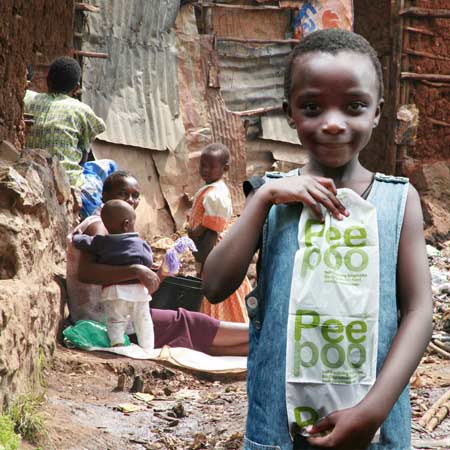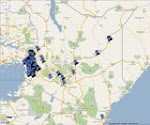written by Kirsikka Pynnönen
(Field work for Master Thesis research on Ecological Sanitation)
Last month UDDTs in rural schools (of Ecosan Promotion Project, EPP) were monitored and post evaluated in Nyanza and Western provinces in Kenya, by a Finnish master student Kirsikka and GIZ consultants Wycliffe and Moses. The purpose of this project is to do research on how these schools have been managing with operation and maintenance (O&;M) of ecosan toilets. Schools selected for this research are the ones managing well with O&;M. Besides monitoring and evaluating the situation on the field, the purpose is to find out what are the main reasons for the good performance in these schools. And figure out if there are some particular issues that other schools, and also projects in the future, could learn from these well managing ones. Why are they managing so well, what factors are affecting to that? As known, one of the major challenges considering ecological sanitation is to create a sustainable operation and maintenance mechanism. How to succeed with that in schools, were challenges are e.g. the high population of toilet users and small children?
 |
| Comparison on maize field of different fertilizers (chemical fertilizer / EcoSan compost) shows good results for EcoSan! Hope and Kindness, Nyanza province. |
|
|
 |
| EcoSans on the school yard, Kakichuma primary school, Western Province. |
In Nyanza province altogether five schools were visited, four of them sponsored by GIZ and Ecosan promotion project: Kendu Muslim Secondary School, Kachan Primary School, Siany Mixed Secondary School and Radienia Primary School. One of the schools, Hope and Kindness, was self sponsored. All the schools were managing relatively well with their operation and maintenance. Toilets were correctly used by pupils and teachers, clean, there was no smell or flies and storing facilities were functioning. Urine and also dried and stored compost was utilized in the school farms! I was happy to see how people were dealing with ecological sanitation very positively and they consider it as a very important issue. Interviewed students were pleased to use UDDTs, as they are clean and not smelly. Idea of reusing urea and compost from the toilets as a fertilizer in the school gardens or farms was well accepted. All the pupils I talked with knew the benefits of this natural fertilizer and had accepted the reuse.
In Western province schools were already closing for the Christmas holidays, so we managed to visit only some of them. Eldoret Educational Center was a very good example of well operating and maintaining schools! But, we also got one example of the opposite performance: in Kitale Ndogo Primary school the maintenance of UDDTs seemed to be entirely neglected, and the condition of the facilities was terrible. Unfortunately the head of the school was not around, so reasons for this bad performance could not be figured out. Field observations and interviews in Western province will be continued next week, and also Kitale Ndogo Primary will be visited again.
 |
| A look inside to a well maintained UDDT, Eldoret Educational Centre, Western Province. |
 |
| Dry product ready for storing, Eldoret. |
Ecological sanitation has been generally accepted very well in these schools and also in the communities around. Some of the schools had built more UDDTs after the EPP, and communities around were involved – which is one important factor. The schools are spreading the ”gospel of ecosans” (as one head teacher put it) and some schools get visitors who just want to see and learn about ecological sanitation. Pupils would prefer this kind of toilets also in their home communities, and for sure are spreading the idea to their parents and relatives.
Now it’s time to work with the collected data and make some conclusions. I’ll get back to the topic later!
Read more...


















